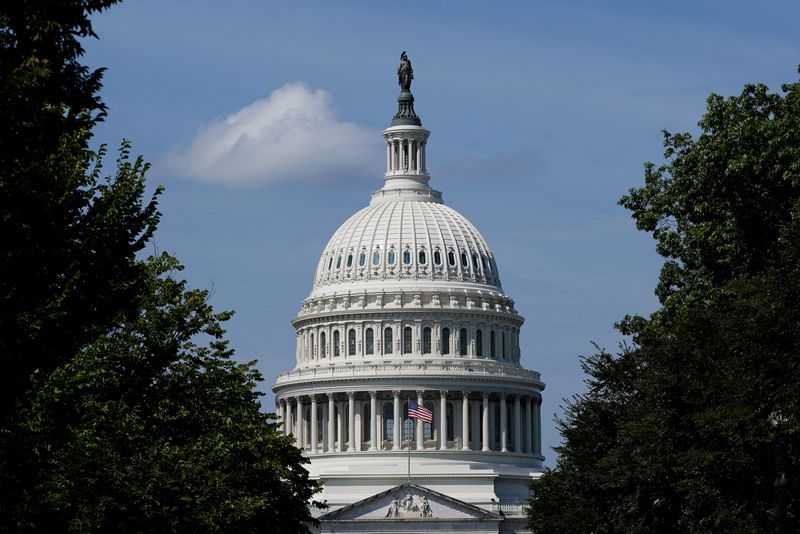Proactive Investors - Time is running out to find a solution on the US debt ceiling issue.
That’s according to Treasury Secretary Janet Yellen, who issued the dire warning on Tuesday, describing the US as facing an "unprecedented economic and financial storm."
President Joe Biden and his Republican counterparts, including Speaker of the House Kevin McCarthy, have engaged in tense discussions regarding the US debt ceiling this week.
Failure to raise the debt limit would result in the US government defaulting on its bills, an unprecedented event that would have catastrophic consequences. The ramifications include furloughs for federal workers, a crash in global stock markets, and the likelihood of the US economy slipping into a recession.
The debt ceiling issue is critical and the urgency to address it is paramount – but why is it so critical? Here are answers to some of the most common questions related to the debt ceiling crisis.
What is a “debt ceiling”?
The debt ceiling, also known as the debt limit, is a legal limit set by the United States Congress on the amount of debt that the US Treasury can issue to finance the government's operations and meet its financial obligations. It represents the maximum amount of money that the federal government can borrow to fund its activities. The debt ceiling is typically set as a specific dollar amount and must be periodically raised or suspended by Congress to allow the Treasury to continue borrowing beyond the existing limit.
Essentially, it helps control government borrowing and ensures congressional oversight of the nation's debt. The idea is to prevent excessive government spending and borrowing, as well as to maintain the government's creditworthiness. When the debt ceiling is reached, the Treasury Department must take extraordinary measures to continue paying the government's bills, such as using accounting maneuvers and temporarily halting certain payments.
Why is there so much panic related to the debt ceiling?
The US debt ceiling issue is important to the economy because it directly affects the ability of the US government to borrow money to meet its financial obligations.
Here's why it is significant: If the debt ceiling is not raised or suspended when the government reaches its borrowing limit, it may not be able to pay for its day-to-day operations, such as salaries for federal employees, military expenditures, and essential services, potentially causing a government shutdown.
The debt ceiling issue can also affect the perception of the US government's creditworthiness. If there is a risk that the US government may default on its debt obligations due to hitting the debt ceiling, it can lead to a loss of confidence in US Treasury bonds, which are considered one of the safest investments in the world. This loss of confidence can result in higher interest rates on government debt, as investors demand higher returns to compensate for the increased risk. Higher interest rates on government debt can then have a ripple effect on borrowing costs for businesses and consumers, which can slow down economic growth.
We’re seeing how the debt ceiling issue can create uncertainty in financial markets. Investors may become more cautious and hesitant to make investments or lend money if there is a risk of the US government defaulting on its debt, causing increased market volatility and a decline in investor confidence.
Moreover, the US government issues Treasury bonds as a way to borrow money, and these bonds are widely held by investors and institutions around the world. A default or even the perception of a potential default can have severe consequences on global financial markets, potentially triggering a financial crisis.
Has the US ever defaulted on its debt?
No. The US has never defaulted on its debt by failing to make principal or interest payments on its obligations. However, there have been instances in the past when the US government came close to defaulting or faced temporary disruptions in meeting its debt obligations due to political disagreements over raising the debt ceiling.
In 2011, the US faced a debt ceiling impasse. The government reached its borrowing limit, and there were contentious debates in Congress over raising the debt ceiling. While a default was ultimately averted, the brinkmanship and uncertainty surrounding the issue led to the first-ever downgrade of the US government's credit rating by Standard & Poor's.
Another similar situation occurred in 2013 when the government faced a partial shutdown due to a budgetary stalemate between Congress and the Obama administration. Although this situation did not involve a direct default on debt obligations, it highlighted the potential risks and economic consequences of political disputes over fiscal matters.
How much money does the US owe anyway?
As of April 2023, the public debt of the United States was around $31.46 trillion, around one trillion more than a year earlier, when it was around $30.4 trillion.
What’s the latest with negotiations?
Democratic and Republican leaders, including President Joe Biden and House Speaker Kevin McCarthy, met this week to discuss the approaching debt-ceiling deadline. Although both sides remain far from a deal, they have agreed on a new structure for the negotiations. McCarthy expressed hope that a deal could be reached by the end of the week, emphasizing the need for a framework within days to move forward. Treasury Secretary Janet Yellen has warned about the potential economic consequences of failing to address the debt limit.
President Biden has canceled parts of an overseas trip to focus on the talks, and the White House characterized the latest meeting as productive but acknowledged that both sides may not get everything they want.
